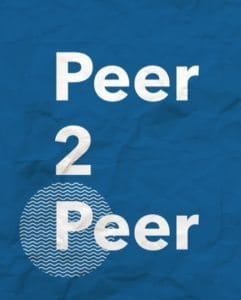China, like much of the world, has uncovered the power of the crowd to finance many different things. Peer to peer (P2P) lending may have started, in its current online form in the UK, but is now firmly established in China and is the largest P2P market in the world. While there are many challenges and hurdles ahead, P2P lending is in the process of totally transforming a significant portion of the banking industry. In this article I will share the history of P2P in China – sharing the evolution and bringing it up to the present day environment. This discussion is based off of research completed in China.
Since the establishment of PaiPai Lending (ppdai.com) in 2007, peer to peer (P2P) lending has been growing rapidly in China. Up to now, P2P lending has experienced 4 stages, with continuous increase in the number of platforms, investors and average monthly loan volume.
First Stage: 2007-2012 (starting period focused on credit lending)
 During the early years of P2P platforms, about 50 sites were established, out of which 10 were actively used. By the end of 2011, average monthly loan volume was around $100 million, effective investors achieving approximately 10,000 individuals.
During the early years of P2P platforms, about 50 sites were established, out of which 10 were actively used. By the end of 2011, average monthly loan volume was around $100 million, effective investors achieving approximately 10,000 individuals.
At this stage, most founders only had backgrounds in internet rather than lending or finance. They followed the model of PaiPai lending, which focused on credit lending alone.
First, a borrower provided personal information on the platform, which would then be verified. After being granted a line of credit, a borrower would publish the offer based on the credit granted. But since the credit system in China was not well established, information didn’t flow well among platforms. Problems occured when one user borrowed from different platforms at the same time. The most well know borrower, whose nick name was Tank, borrowed around $700,000 in total, which later defaulted on every single platform.
Because of the reoccurrence of this problem, each platform started to reduce the line of credit to borrowers. Therefore, many borrowers couldn’t payback through borrowing more, resulting in extensive default. Through November 2011 to February 2012, the biggest default in a single platform was $4 million. Many had over $1.5 million bad loans. Hundreds of millions of loans were still not recovered up to now.
Second stage: 2010-2013 (rapid expansion stimulated by regional loans)
 During this stage, online lending platform started to change. Some experienced offline lenders started to build up P2P platforms. Meanwhile, some software companies developed online platform framework, priced at $5,000 – $10,000, supporting the offline entrepreneurs with online technics. The total cost of one platform was $30,000. Number of online platform increased rapidly from 50 to 240. Up to the end of 2012, monthly average loan volume reached $500 million, with 25,000 to 40,000 effective investors.
During this stage, online lending platform started to change. Some experienced offline lenders started to build up P2P platforms. Meanwhile, some software companies developed online platform framework, priced at $5,000 – $10,000, supporting the offline entrepreneurs with online technics. The total cost of one platform was $30,000. Number of online platform increased rapidly from 50 to 240. Up to the end of 2012, monthly average loan volume reached $500 million, with 25,000 to 40,000 effective investors.
Because the experienced founders understood the risks of private lending, they learned the lessons from the failures of precious platforms. They started the model of raising money online and lending offline, which focused on lending money to local borrowers. In this way, they could have detailed inspection of all aspects of a borrower, including the usage of fund, source of payback, collateral, etc. Risks got controlled effectively. But some platform owners were less cautious about risk management, resulting in bankruptcy. Till 2013, around 4 to 5 platforms couldn’t support investor exits.
Third stage: 2013-2014 (risk explosion caused by high interest rate self-finance)
 During the third stage, online lending framework became more mature. Founders could buy the framework on Taobao (ebay in China). Since big banks started to limit loans outstanding in 2013, companies and speculators found opportunities in online P2P. They spent $15,000 for P2P framework and started to raise money with a rental office. Number of P2P platforms grew to 600 from 240. Online trading volume reached $20 billion, 9 times larger compared to 2012. China became the biggest P2P lending market, with 90,000 to 130,000 effective investors.
During the third stage, online lending framework became more mature. Founders could buy the framework on Taobao (ebay in China). Since big banks started to limit loans outstanding in 2013, companies and speculators found opportunities in online P2P. They spent $15,000 for P2P framework and started to raise money with a rental office. Number of P2P platforms grew to 600 from 240. Online trading volume reached $20 billion, 9 times larger compared to 2012. China became the biggest P2P lending market, with 90,000 to 130,000 effective investors.
Growth of P2P lending wass attributed to the growth new platforms, accompanied by unqualified and fraud agencies. The commonality of online platforms during this period was attracting investors with high interest rates – 4% per month. These online platforms used the money raised online to pay back bank loans, loan sharks or invest in their own projects. From October to the end of 2013, 74 platforms went bankrupt with owners absconding or restricting investors from withdrawing funds. $300 million was involved, which was three times higher than the total volume of previous defaults.
Fourth stage: 2014-now (regulating period)
During this stage, the government has showed positive attitude towards online financing innovation and provided policy support to P2P lending. Many financial giants and entrepreneurs who had been interested in online lending but concerned about the policy risks started to enter the field and build their own P2P lending platforms. Many financial giants and entrepreneurs who have been interested in online lending but concerned about the policy risks started to enter the field and build their own P2P lending platforms, some having launched this past August. Up to June 2014, the number of P2P lending platforms reached 944, with $3 billion average monthly, which is expected to reach $5 billion at the end of 2014. The number of online platforms is expected to reach 1300, with effective investors to be 500,000.
(Editors Note: This is the first in a series of articles that will explore the fast evolving space of peer to peer lending in China)
_________________________
 Naiwen Zhang is a Master of Management-Finance Candidate at Weatherhead School of Management, Case Western Reserve University. Naiwen is a partner at Innovi Entrepreneurial Management Consultants.
Naiwen Zhang is a Master of Management-Finance Candidate at Weatherhead School of Management, Case Western Reserve University. Naiwen is a partner at Innovi Entrepreneurial Management Consultants.

